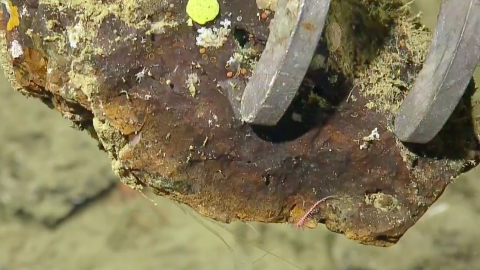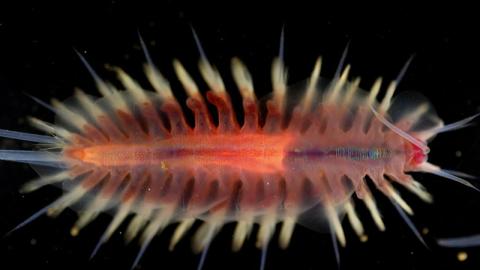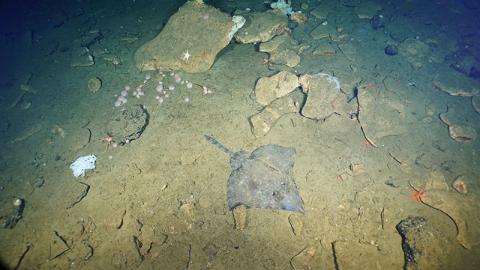Mission Plan: Mineral-Rich Marine Biomes

Guest blog by researchers from Scripps Oceanography, University of California San Diego, supported by the NOAA Office of Ocean Exploration and Research.
The deep sea is a vast reserve of mystery and possibility. Haunted by see-through fish with giant teeth, the deep sea also hosts plentiful but little-studied microorganisms and minerals.
The residents of the deep sea, and the minerals that compose its floor, are of growing importance to modern society for two reasons: microorganisms offer significant biopharmaceutical and industrial promises and some of the minerals, such as those in phosphorite and iron-manganese (Fe-Mn) crusts, are increasingly rare and in demand. Plus, the opportunity to explore the mysteries of the deep sea and better understand its inhabitants has grown with advances in the use of remotely operating vehicles (ROVs).
Unusual properties of deep-sea organisms may turn out to be important in ways we never expected. For these reasons, during the Mineral-Rich Marine Biomes expedition we are exploring nine sites along the Southern California Borderland (SCB), a geological region categorized by fault lines and tectonic plates. Here, invertebrates, microbes, and the substrates on which they grow are all of economic and ecological interest. The crucial questions, if we ever plan to use these resources wisely for economic gain, are what lives there and what ecosystems services do they provide? Should any of these services be protected? Can resources be exploited without harming these ecosystems?
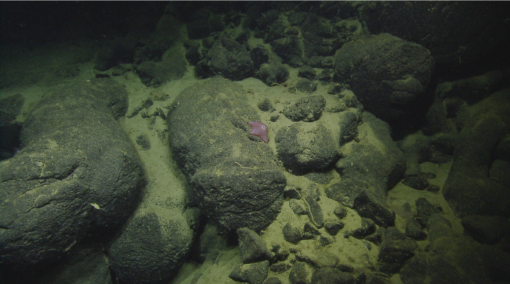
In this interdisciplinary expedition on the Exploration Vessel Nautilus, we intend to study the Southern California Borderland benthic communities to better grasp the biotic diversity, biopharmaceutical potential, and the substrate mineral composition of the ecosystems.
Previous research has shown that ocean sediments harbor bacteria that produce compounds useful for the treatment of cancer. Similarly, shallow-water sponges and soft corals have yielded cancer treatments and drugs to relieve chronic pain. Yet, the organisms that inhabit deep-sea sites have been poorly studied for their pharmaceutical potential. The deep sea off southern California also hosts demersal fish (those that live or feed near the ocean bottom) that have commercial value, including sablefish, dover sole, and thornyheads.
Without understanding the ecosystem as a whole - without understanding the costs and tradeoffs of commercial activities, - it is premature to exploit these resources. This study is part of the paradigm shift from looking at individual components of an area to the ecosystem as a whole community.

In deploying ROV Hercules and using the research facilities aboard the Nautilus, we will collect rock, sediment, microbe, and invertebrate samples; record videos of animal communities along survey transects; and take close-up still photos. All of these will be used to assess biotic diversity and biopharmaceutical potential. Our goal is to establish biotic baselines for microbes and invertebrates to before any resource extraction takes place, effectively capturing the area’s ecological fingerprint. In particular, we would like to know which animals and microbes have an affinity for or depend on phosphorite and Fe-Mn substrates. We plan to deploy experiments that will eventually tell us if different substrates (mineral-rich rock, carbonate, wood, and bone) determine who settles and thrives. Additionally, samples will be subject to genome mining and metagenomics that can document biosynthetic potential.
Surprisingly, despite its proximity to California’s major populations centers, much of the Southern California Borderland remains unexplored and some is even unmapped. Thus, the goals of this study are to explore, document, and discover. We hope our data will provide critical baseline information that governments, managers, the industrial sector, scientists, and the public can use for conservation planning and inform the tradeoffs involved in exploiting deep-sea resources.
In order to better achieve this goal, the expedition promotes education, outreach, and making its findings available to the public. Additionally, you can watch live dives from the expedition on the Nautilus Live website.
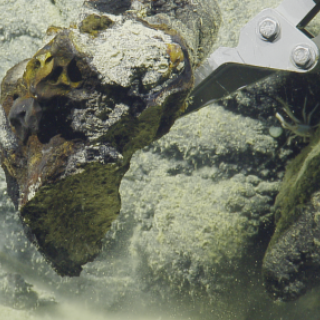
Benthic Communities and their Biopharmaceutical Potential
In this interdisciplinary expedition on the Exploration Vessel Nautilus, we intend to study the Southern California Borderland benthic communities to better grasp the biotic diversity, biopharmaceutical potential, and the substrate mineral composition of the ecosystems.
